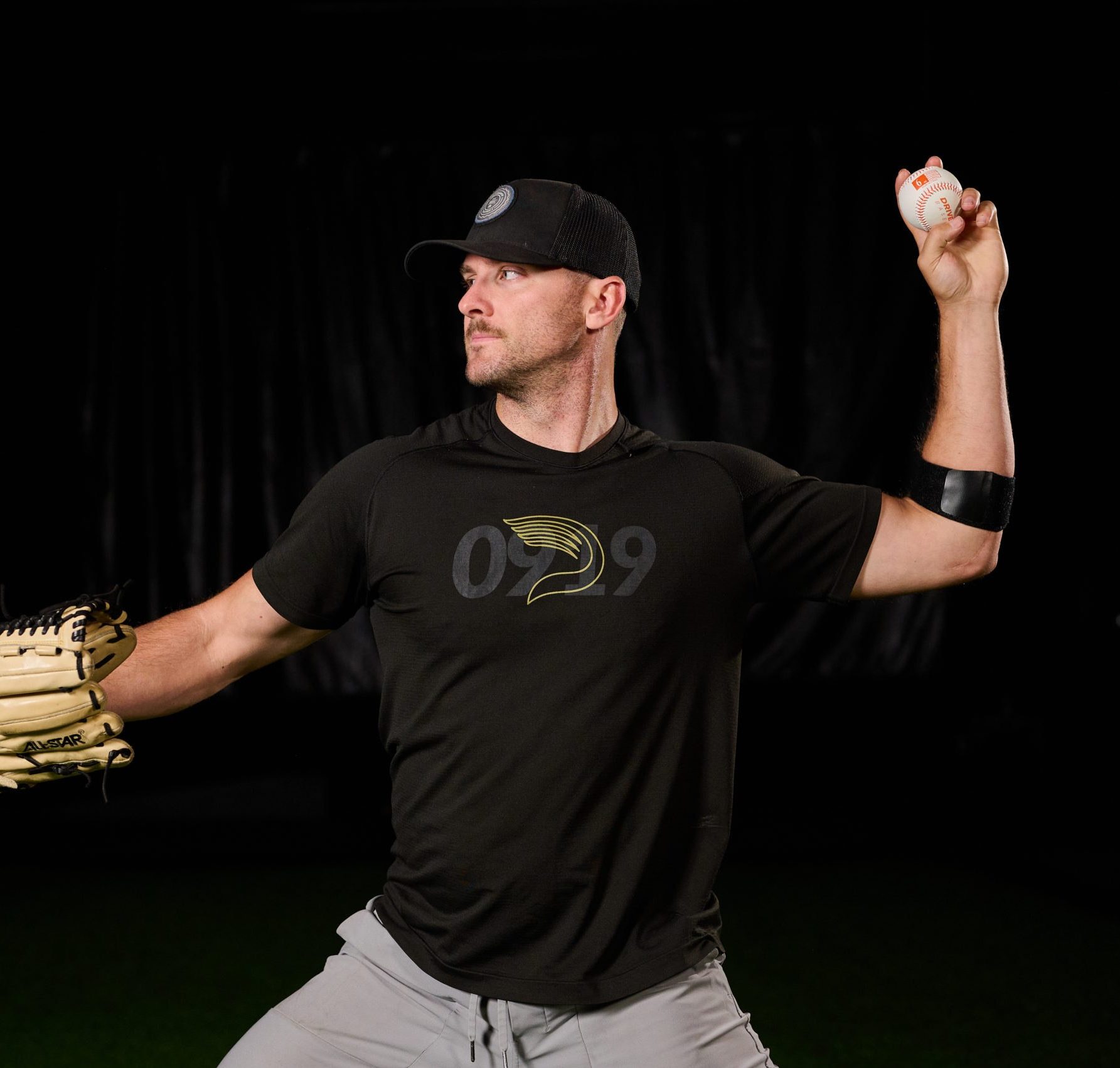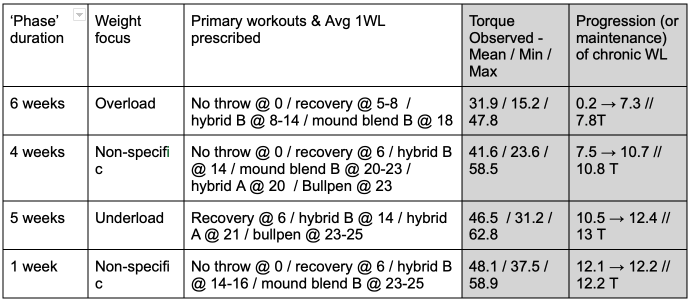Off-Season Workload Progression using Pulse

By Stephen Hart, Pitching Coordinator
Pitchers, especially high-level pitchers, are creatures of habit. Most pitchers have a specific warm-up routine, a pregame playlist, and a pre-pitch routine. Some may even have a routine throwing program they utilize after their season ends. For many, it is common to take 2-3 months off from throwing.
For some, this routine can work. But for many, this routine can leave a lot of player development on the table as that throwing timeline leaves hardly any time to improve their arsenal, velocity, or command. Such was the case for one of our professional athletes before he reported for Spring Training.
Proposing to start throwing 1-2 months earlier in an offseason can create some hesitation among high-level pitchers. At Driveline, we have found that intelligently building our athletes back to season form using insights from Pulse helps ease that feeling of hesitation for athletes.
This blog will outline how we, and any coach, can use Pulse to help ensure our athletes are prepared for Day 1 of Spring Training, the opening weekend of conference play, and improve their chances of success. Specifically, we’ll cover:
- The goals of the program
- The approach we took (i.e., What numbers did we look at to help monitor program adherence?)
- Onboarding the athlete and providing training feedback
- The results
Goals of the program (plan of attack)
1. On ramping program to prepare his body for higher intensity training. Leveraged overload balls exclusively to help keep peak torques lower by helping him regulate his intensity.
2. Gradually introduce lighter weight balls to build up throwing fitness and introduce the body to higher (on average) torque values.
3. Reinforce arsenal changes using Trackman, Edgertronic, and Intended Zone tracking while continuing to push torque values higher before ST.
In the example below, we’ll show what numbers we used to monitor training that was done remotely.
Numbers Monitored from Driveline Pulse
There are a lot of metrics that can be found and tracked using Pulse. Many can be quite valuable for training! Some of these metrics include 1-day workload (1DW), chronic workload (CW), torque, arm speed, arm slot, number of throws, high effort throws, and fatigue units. Amongst all the metrics, the primary metrics we paid close attention to were 1DW, average torque, and chronic WL. Let’s review these metrics and how they applied to our athlete’s training.
Put simply, 1DW is a number that quantifies the amount of throwing an athlete does on any given day and at what intensity. This includes any plyocare throws, catch play, long toss, etc. It’s a simple, tangible number that provides feedback on the athlete’s throwing. Where generally, lighter throwing days will yield a lower 1DW, while our bullpen or game days will yield a higher 1DW. One can think of prescribing 1DWs as using (recommended) guard rails on our athlete’s training volume.
However, not all 1DWs are created equal, as the throwing intensity component must be considered. For example, two athletes can have the same 1DW, but the time it can take to reach that 1DW can be very different based on how hard they are throwing (i.e. their intensity). In other words, you can throw a lot at a lower intensity, OR you can throw less at a higher intensity and reach the same 1DW.
So, if 1DW is very valuable yet doesn’t tell the whole story of an athlete’s training session, what complementary metric can we use to give us insights into the throwing intensity of the session? This is where average torque comes into play. The harder the athlete throws in a given session, assuming the athlete places the sensor correctly, the higher his average torque. Conveniently, both these numbers are athlete/coach facing and can be found right on the main screen in the Pulse app. This can be seen below in the examples of a bullpen (left) and recovery (right) day.


In this way, I view 1DW and average torque as complementary metrics that give me a sense of throwing volume and intensity. I think all coaches should be able to monitor these two critical variables in our programs. The hidden power of monitoring these metrics is twofold :
- Despite the program being largely completed remotely, I can objectively see how the program is being carried out. I know the throwing content of each day, the amount of throwing volume (1DW), and the intensity (avg torque) the athlete was exposed to.
- This also provides us objective information and flexibility to pivot and adjust the following day’s program if the athlete has abnormal throwing days.
- Prescribing 1DWs creates a tremendous amount of accountability for the athlete. Broadly, they understand what they have for throwing that day (light, medium, or high intensity) and the prescribed 1DW they are trying to reach. Within these constraints or guard rails, as I like to view them, the athlete can explore their mechanics, a drill, etc., if they wish to and are no longer constrained by specific sets and reps. In the example below, our athlete was programmed to finish with a 1DW between 8 and 10.

Onboarding and training feedback
Nearly all of the onboarding and time spent gaining familiarity with the Pulse app was done in person during his initial assessment. This was also a great time to discuss the ‘what,’ ‘where,’ and ‘why’ with all things feedback related to his training using Pulse.
- What metrics will we be focused on for training?
- Primary, 1DW, and average torque
- Secondary, chronic workload
- Where can you find these metrics in the app?
- See picture above
- Why are we focused on them?
- See section above
- The biggest self-feedback or learning tools used in the early stages of training revolved around average torque. And identifying the broad range of average torque we can expect for each throwing day. Below are examples of each throwing day and the average torque imposed.



- Because this program was designed to take our athlete from Day 1 of throwing to Spring Training, keeping close tabs on his 1DW and the gradual exposure to increasing avg torque values was essential for success. The table below outlines the gradual progression and changes made to the program over the 16 weeks. As well as the observed progression of torque exposure and chronic workload.

The results
Overall the off-season program was a great success. We were able to improve his arsenal (via the addition of a new pitch), but we could intelligently build up our athlete’s throwing fitness to better prepare his body for Spring Training than in previous years. Not to mention our athlete was able to hit an off-season PR of 94.
As discussed earlier, breaking or creating new habits can be an uphill battle for some athletes. Leveraging resources such as Pulse and using it as a guide to provide direction for programming and throwing progression is invaluable.
Comment section